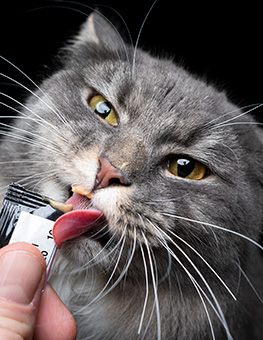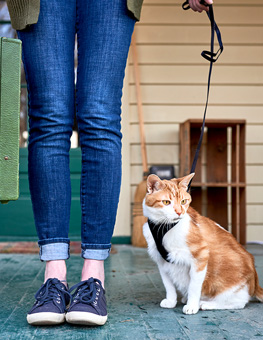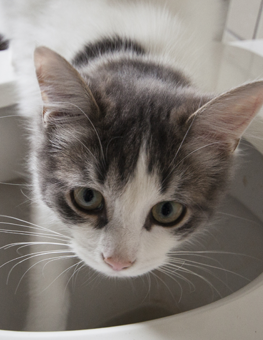Introducing Your Kitten to Their Litter Environment
Cats are fastidious creatures, even at a young age. Follow these simple steps to make housetraining a snap.
Give your kitten a safe place to adjust to her new home: A young kitten, especially, might be nervous in her new surroundings. To minimize your kitten’s anxiety and assist with training, confine her to a quiet, secluded area such as a small bedroom or a bathroom for the first few days. Along with her litter box, place her bed, food and water dishes in the room; just be sure to keep them well away from the litter box since neither kittens nor cats will eliminate near their food.
Prepare the litter box: Make sure the litter box is big enough for her to move around in, and easy to step in and out of. Fill the litter box with roughly two inches of litter. It’s best to avoid scented litter; while humans may prefer the smell of rosebuds over fresh cat poop, your kitten does not, and it may deter her from using the litter box.
Plan your strategy: Associate the litter box with positive behavior. Kittens usually need to eliminate within a half hour of eating, drinking or sleeping. When the time is right, put your kitten near the litter box and play with her for 10 or 15 minutes. Gently swish the litter around to stimulate your kitten’s interest and encourage her to hop inside to investigate the box. During the training process, place your kitten’s stool in the litter box to help establish a connection between elimination and the litter box.
Provide positive reinforcement: : Supervision is key during the first few days of training. One of the signs that she may need to eliminate is scratching at the floor or disappearing behind a couch or chair. If you witness this behavior, calmly pick your kitten up and place her in the litter box. Help jumpstart her natural instincts by taking her paw and scratching at the litter. If she is successful, provide immediate, positive reinforcement by praising and rewarding her with a treat. If she has an accident, don’t punish her; at best, you’ll make her afraid of you and, at worst, she’ll come to associate the litter box with punishment. Remain patient with her and soon enough she’ll get the hang of it.
Clean the litter box frequently: If waste is allowed to accumulate, your cat may decide to do her business elsewhere. Scoop out or replace the soiled litter, ideally once a day. Thoroughly wash the litter box at least once a week, adding a small amount of bleach to the water to neutralize odors. Don’t use soaps, detergents or ammonia which have harsh smells that may inhibit your kitten. Once you find a litter that is agreeable to your kitten, don’t change it. And avoid moving the litter boxes to another location which will only cause her confusion.
Provide adequate litter boxes: If you have a large home, it’s wise to place a litter box on each floor. Similar logic applies if you have more than one cat; it’s best to maintain one more litter box than the number of cats in your household (i.e. 5 cats/6 litter boxes).
If your kitten’s bowel movements or urine don’t look normal, or she has accidents after she is housetrained, then her health might be at risk. For example, urinary tract problems can cause your kitten to urinate outside of her litter box. Contact your veterinary professional for prompt advice.


















